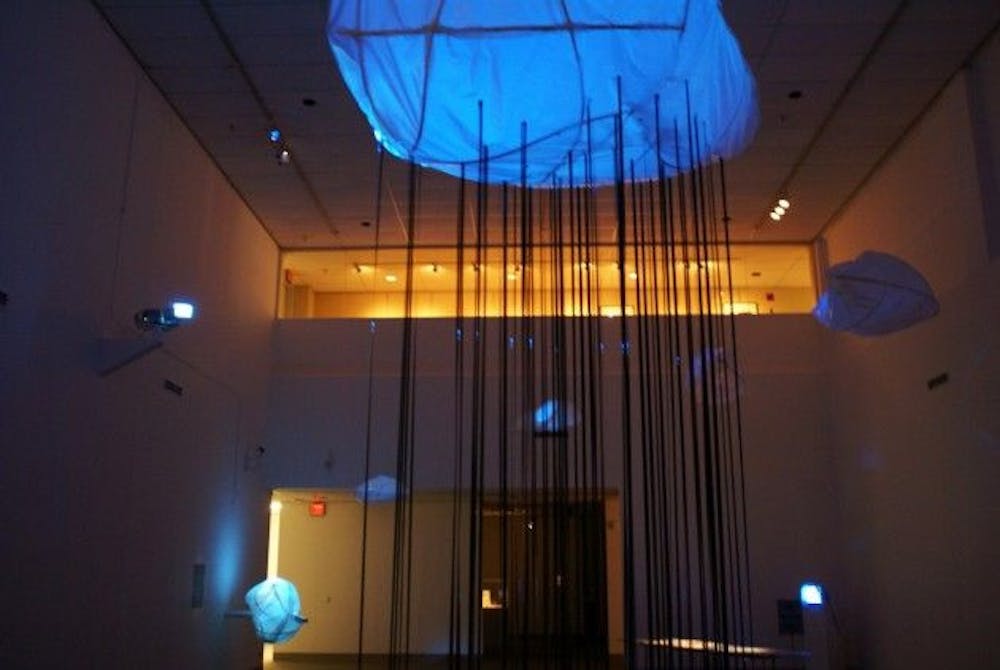In the Art Museum of the University of Memphis, a storm has been brewing.
"Time Pools: Accessing the Aquifer" is a collaborative exhibition between Jason Miller's digital art class and the League of Imaginary Scientists, a group of artists that blurs the line between art and science.
Miller, who is also the AMUM's media specialist, volunteered his digital art class when he found out the League of Imaginary Scientists was coming to Memphis.
"Leslie Luebbers, the director and curator of AMUM, found them somehow, and she got the gears turning to bring them to Memphis," Miller said. "We worked with the idea of an aquifer, and we created a scanner to create memories."
Zachary Morgan, junior art major, was one of the students who contributed to the project.
"I learned a lot about working with a collaborative group, especially on a higher level of doing a museum exhibit," Morgan said. "Their way of thinking was different from ours; they thought on a scientific level when thinking about how to present and through what mediums, which was a counterpoint for artistic way of thinking as a class and helped to balance it out."
The main feature of the exhibit is an enormous "cloud," suspended from the ceiling. This cloud is much more high-tech than any old cumulus, though.
A small television with a lab coat draped around it in the corner shouts instructions: "Yes, it's true! The League of Imaginary Scientists invites you to send messages to the future by encoding them in water and inserting it directly into the aquifer."
On a narrow table - "The Water Table" - there are Buddha boards, paintbrushes and wells of water. Visitors can draw on the boards with water, and then insert the board into the scanning module, the "aquifer." The image on the board will project onto the cloud. The message erases itself as the water evaporates.
One of the main points of the exhibition is to draw attention to the importance of Memphis' aquifer.
Students visited the nearby pumping station with the Ground Water Institute to see where the municipal water comes from and research the importance of the aquifers.
"Our other visit was to the landfill site near Shelby Farms, which is older than when they started mandating that landfills needed liners; there's no liner there, so it leads directly into our aquifer," Miller said. "We get 100 percent of our drinking water from the aquifer."
Scott Schoefernacker, the senior research scientist for the Ground Water Institute in the Herff College of Engineering, provided technical information about Memphis' aquifer system, where the city's drinking water comes from and the impact of potential contamination sources.
"Working with people who deal with groundwater every day, you tend to forget that others don't know how or where they get their drinking water," Schoefernacker said. "I would never have thought of looking at groundwater that way. It's always fun to see something from a different point of view."
The exhibition is free and open to the public and runs until Friday, May 24.




